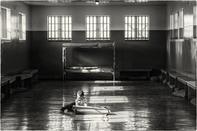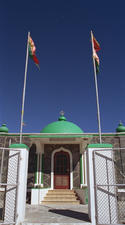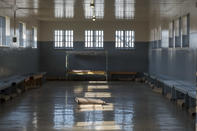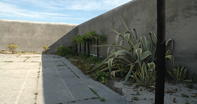Prison Guides
When going to Robben Island, a tour of the prison is included. After the bus tour, visitors are deposited at the entrance of the Maximum Security prison for a tour of the famous prison. This part of your visit is guided by a genuine ex-political prisoner, and their personal insights make the walk through the jail memorable and chilling.

The prison guides do not have an extensive training session and are not given a specific script to follow. Nevertheless, its is said that most of the prisoners have shared a common experience and their interpretations of life in the jail tend to be similar and equally powerful.
One of the guides, Derrick Basson, was asked what it was like to return to the prison as a guide and his answer was quite forthright. Derrick said that he and most of the other ex-prisoners who returned to work on the island, did so because they were unemployed and needed work.
Derrick then noted that most of the prisoners were released without any kind of counselling or employment prospects, and this must have been a bitter pill to swallow. And the prison guides work hard. There are currently about 15 former political prisoners working on the island and, in peak-season, they can do up to six tours a day.
This is bound to become exhausting and monotonous, kind of like an office-job, but Derrick finds something rewarding in every tour that he conducts (and he doesn’t mean the tips). It is, by the way, quite acceptable to give any of the guides a gratuity, and many visitors give their host a golden handshake as they leave the prison.
The Shrine on the Island

From the outside, the maximum security prison is a low building of dark stone. It is flanked by tall watchtowers that stand as sentinels on each corner of the complex. A dusty sports field, surrounded by a double fence topped with barbed-wire, is situated on one side of the prison, and this is where the inmates used to play their inter-prison league matches.
The sports committees on Robben Island were very well organised, drawing up detailed minits of their meetings and issuing certificates of participation to all the players. Adjacent to the prison is the small kramat (shrine) of Sayed Adurohman Moturu, the Sheik of Madura.
He was an Indonesian prince who was banished to Robben Island for leading political resistance against the Dutch Each India Company, and he died on the island in 1754. His body is now buried in Jakarta, but Cape Muslims have been making a pilgrimage to his shrine for the past 250 years, even when the island was an apartheid-prison. The current structure on the site was built in 1969, and a feast called the Khalifa is held there every year.
Communal Prison Cells

As you walk through the perimeter of rusting wire fences that surround the prison building, a feeling of sombre foreboding seems to rise up from the soil. Your first stop is most likely to be the communal prison cells of Block A.
Here, with all the visitors seated on benches arranged along the walls of the cell, your guide will tell you about living conditions inside the jail, and will describe the various disciplinary regimes inflicted on the prisoners. Today, the cells are empty and as cold as concrete, but one can acutely imagine the overcrowding and noise that once characterised this section.
The bright but naïve murals on the walls of the cells do brighten things up a bit, but these were only painted after 1991, when all the political prisoners had left. From the communal cells, you are taken across a windswept courtyard, past various admin blocks, into the main prison building. This is where the hospital, censorship office and solitary cells for the political leadership were housed.
The Famous Exercise Yard

After walking down an echoing corridor, you are led out of a door and into a small concrete courtyard, surrounded by a high wall. This is the famous exercise yard where Mandela and the other ‘dangerous’ prisoners spent a few precious hours in the sunlight, before being put back into their shoebox cells next door.
The courtyard is now lined with large photographs of the famous personalities who were once incarcerated here, but it remains a bleak place. It is no wonder that Mandela and others worked to cultivate a small garden on one side of the yard, to try and cheer things up.
After a short talk in the courtyard, in which the guide will describe how the isolated leaders managed to communicate with the other prisoners and the outside world through a complex smuggling network, the crowd heads off into B Section. This contains the row of solitary cells, arranged in pairs along a narrow corridor, which is lit by buzzing neon lights.
It is then time for the main attraction: Cell 5, Block B. This is the tiny cubicle that contained one of the greatest figures of the twentieth century, Nelson Mandela, which offers a small window of insight into the life Madiba lived as a political prisoner.
By David Fleminger